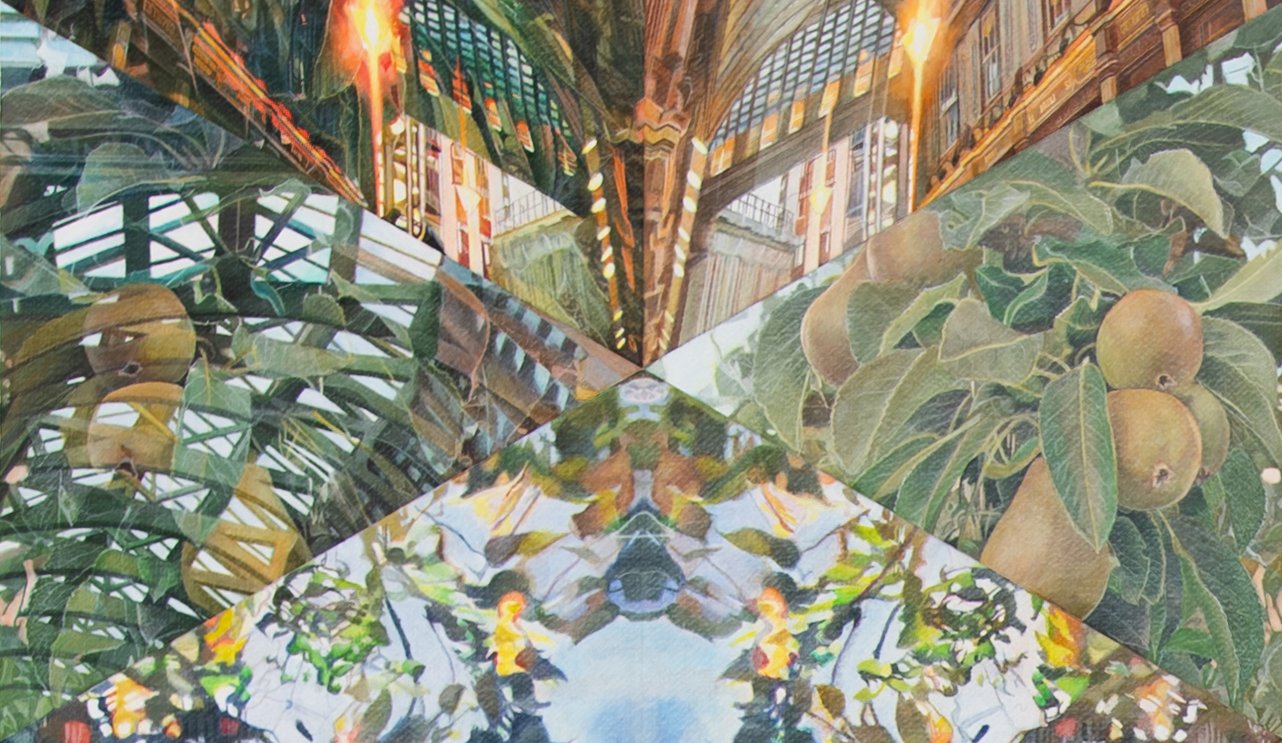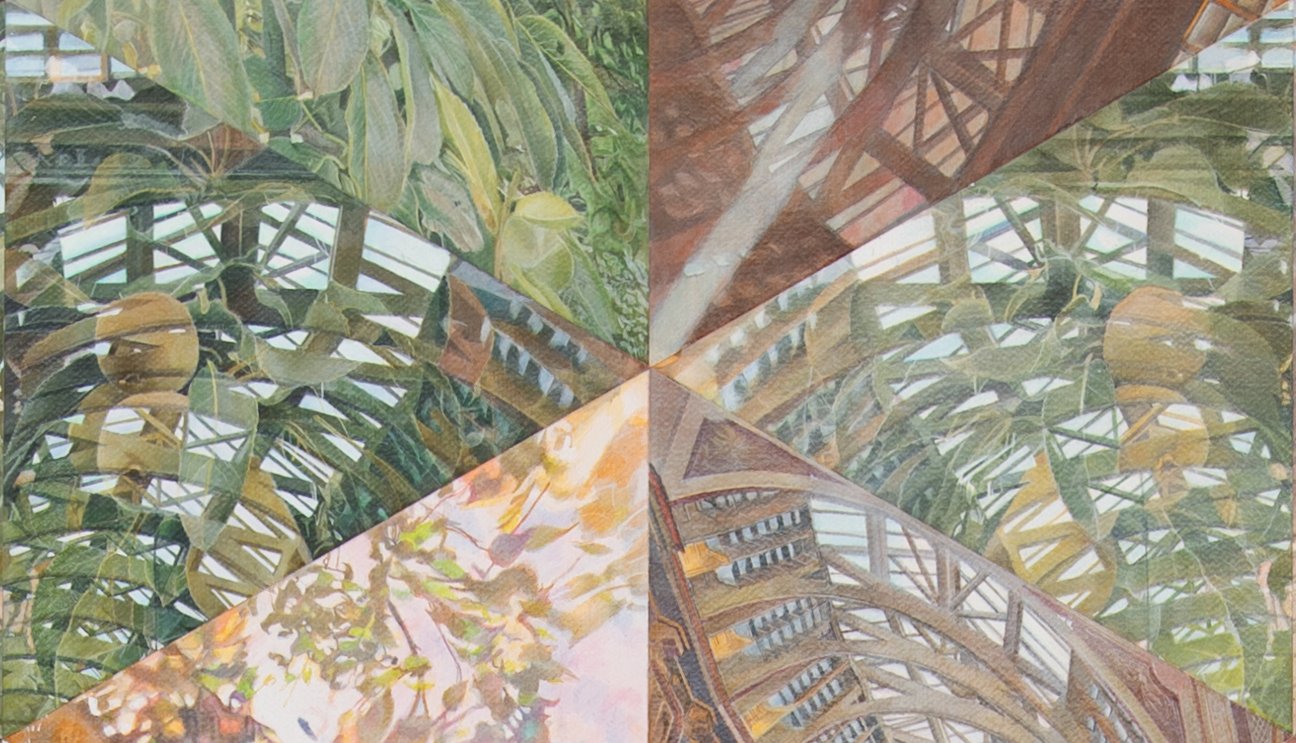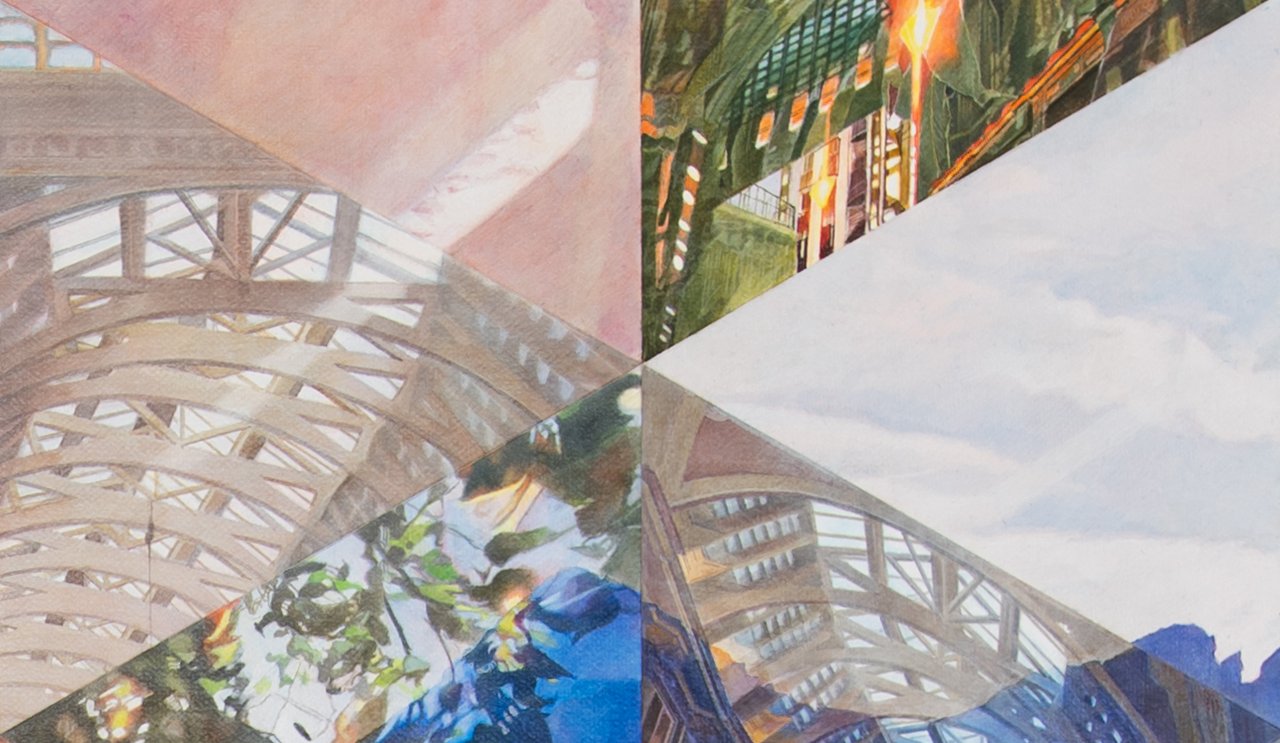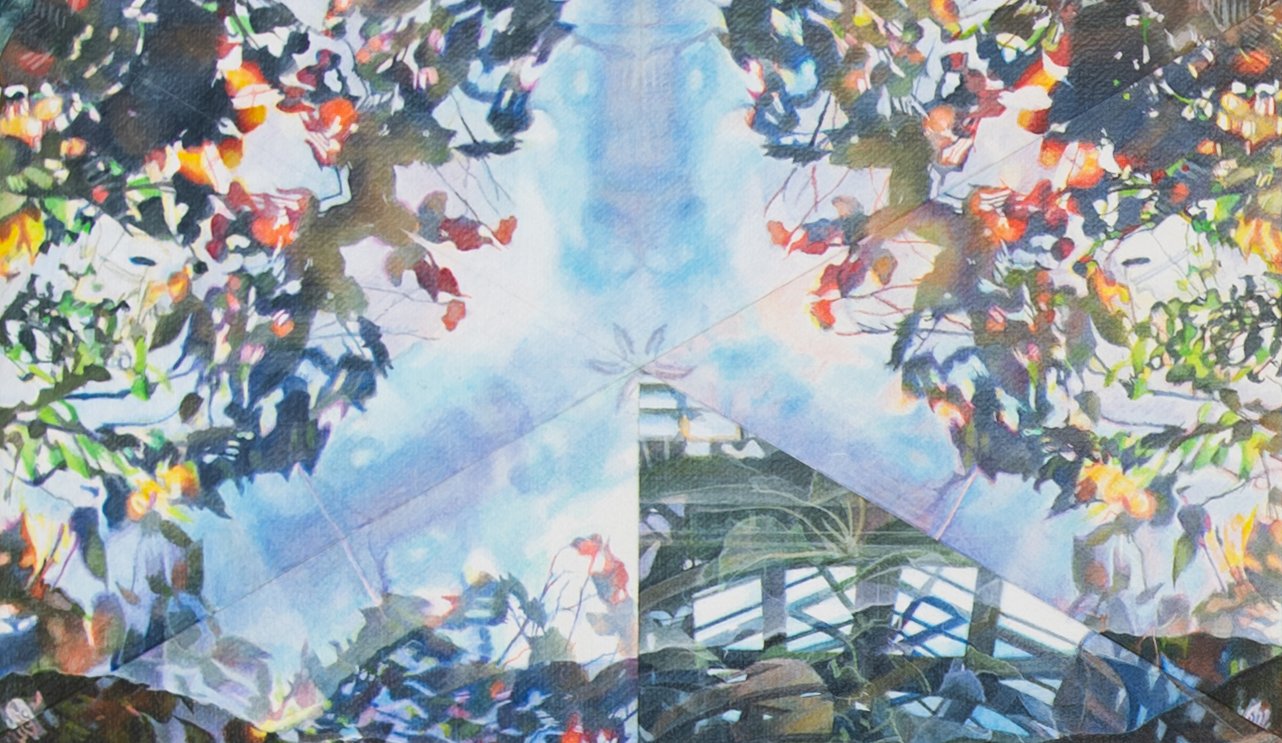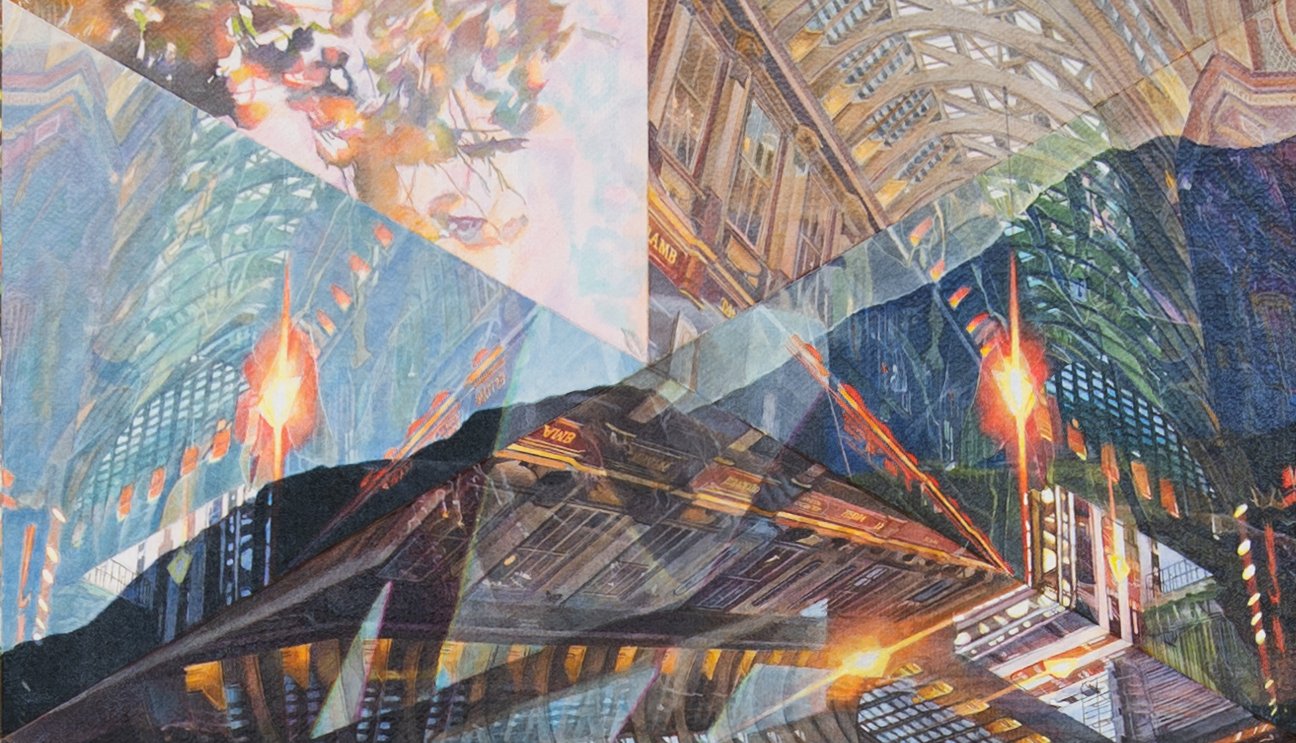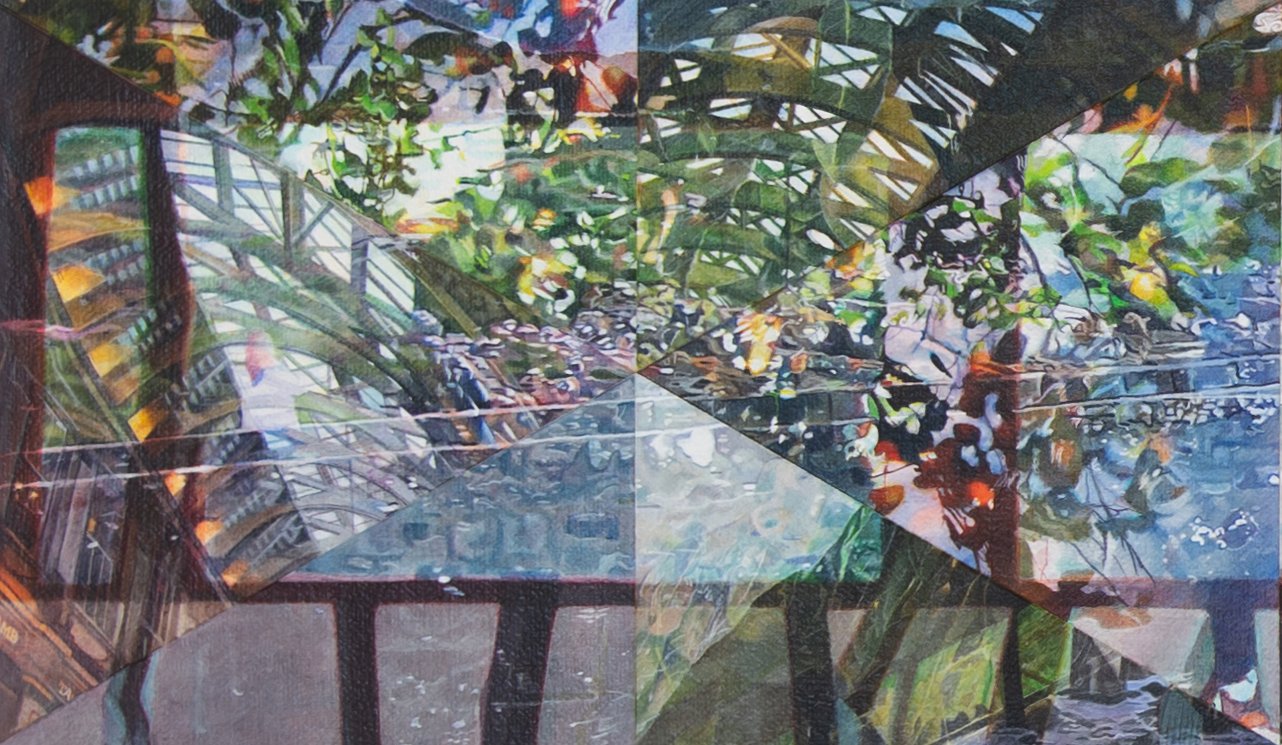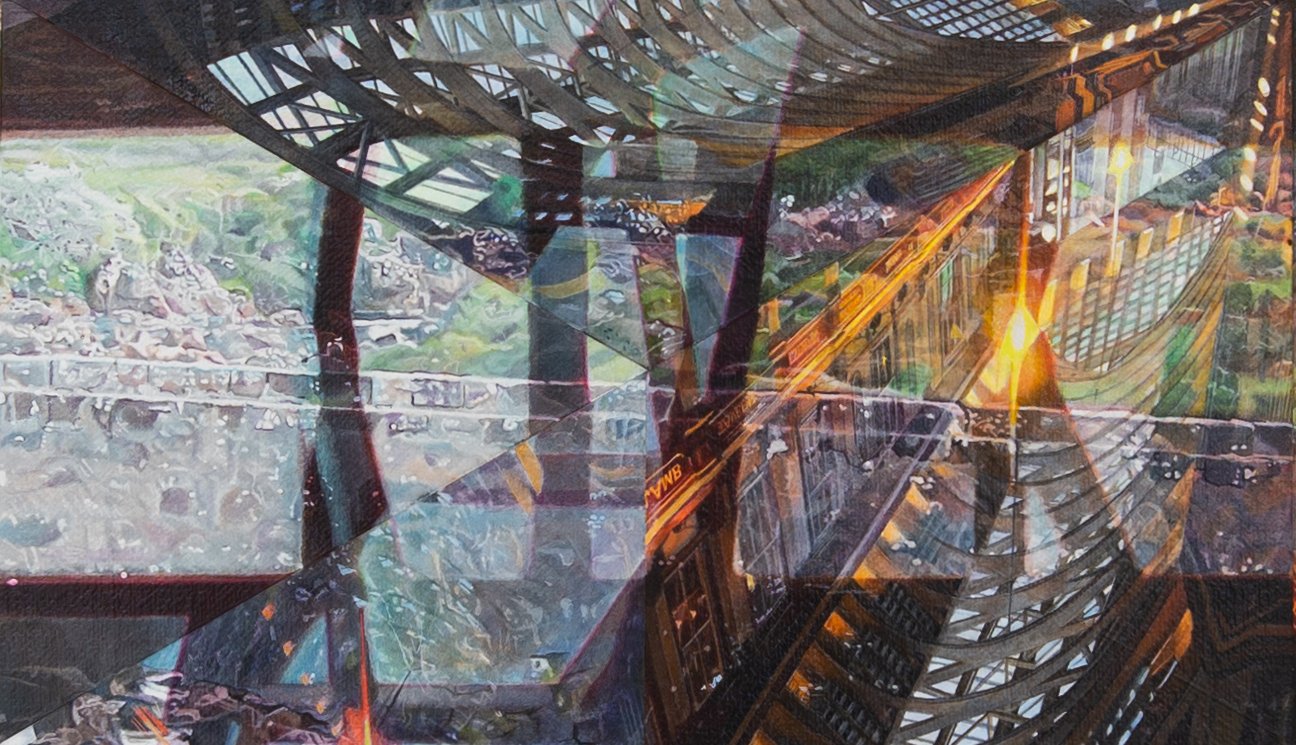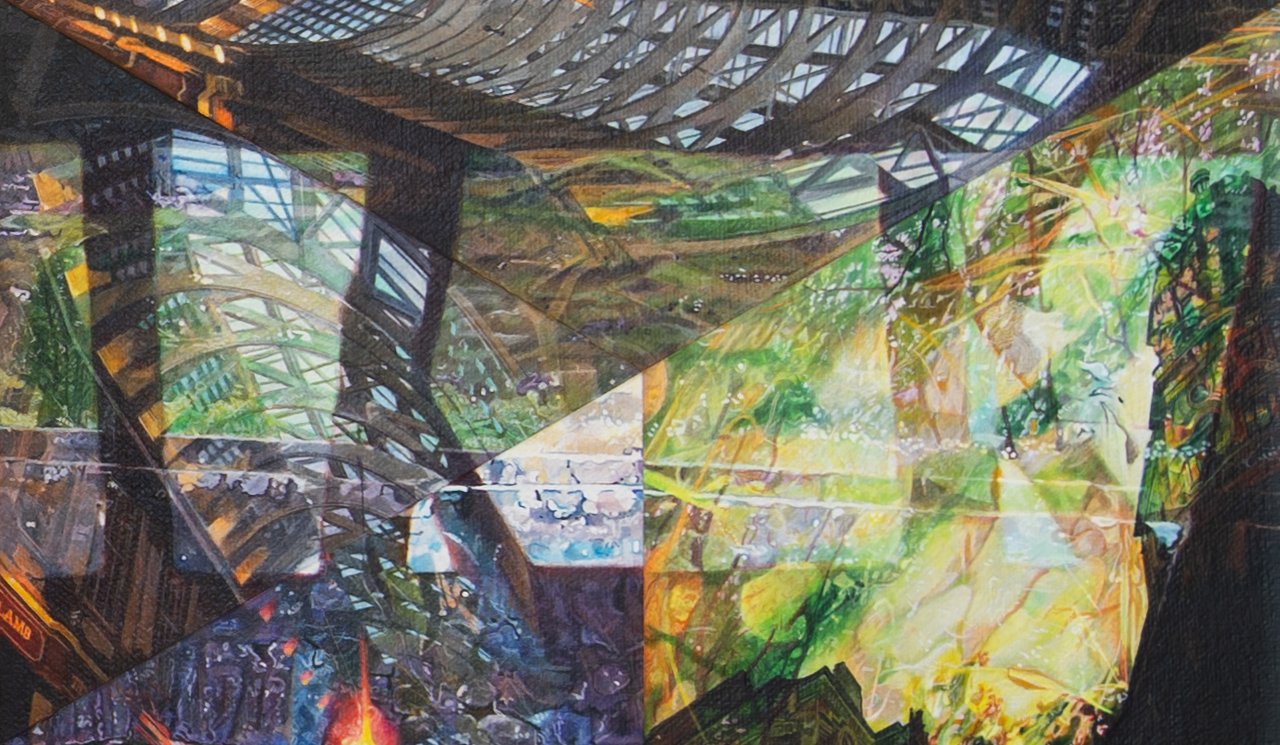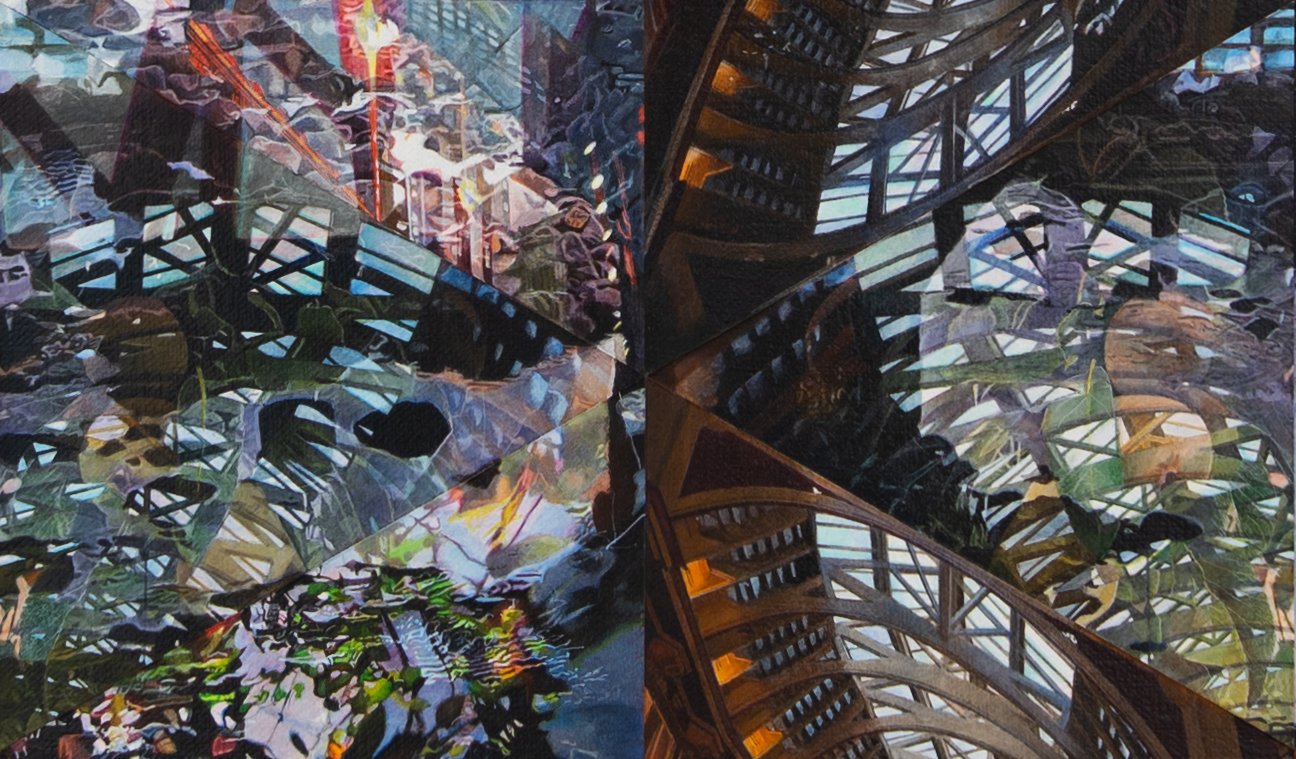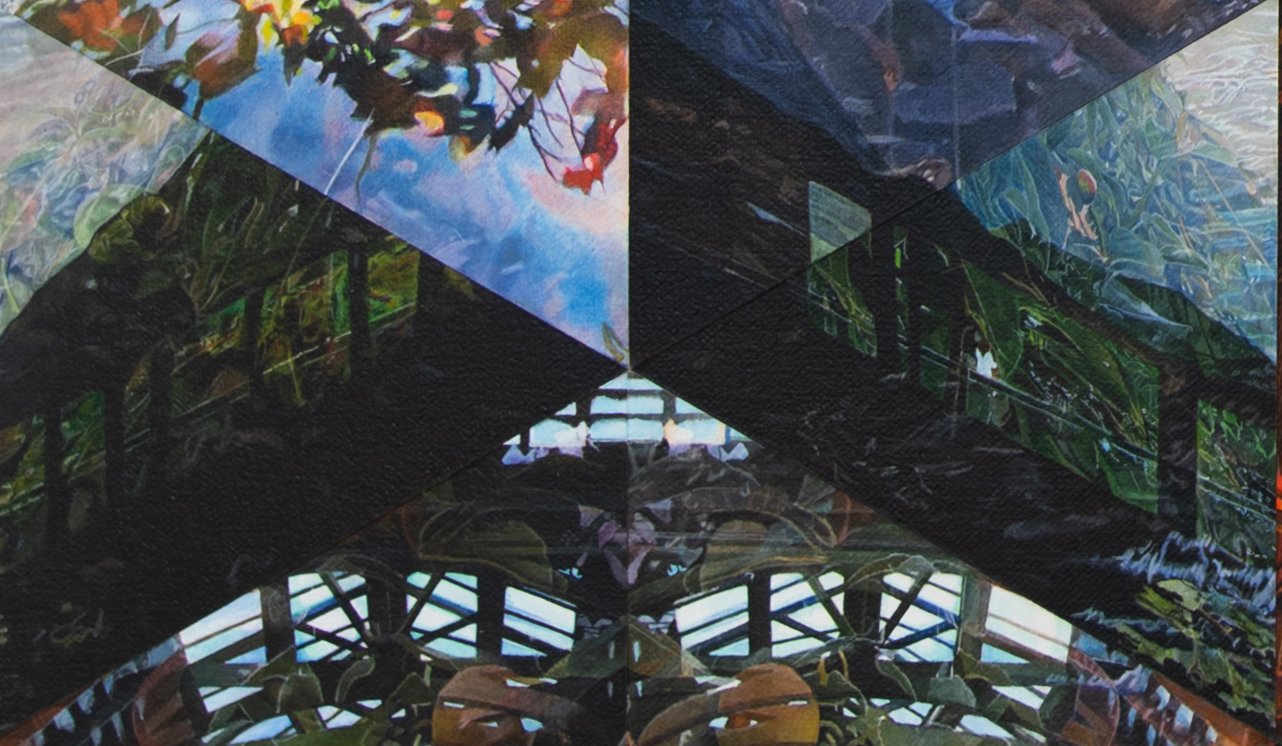DÉMARCHE ARTISTIQUE
L’expérience directe
Le surplus des possibles et le flot d’informations permanent tendent à disperser notre attention et nous dissocier du moment présent. En cette ère de l’instantanéité, je questionne nos habitudes perceptives, considérant qu’elles définissent notre expérience de la réalité.
Le temps
Par la peinture, je m’engage dans une prise de position et une interrogation philosophique du temps. Fascinée et inspirée par les manières de faire et le mysticisme des grands maîtres de la Renaissance, j’adopte une technique longue d’accumulation de couches de glacis m’amenant à renouer avec une forme de lenteur.
Les perceptions
Malgré cette approche plastique très réaliste au départ, elle se traduit par l’observation tellement fine du sujet qui, dans son appropriation, impose le rapprochement et de là surgissent les formes abstraites. Le détail excessif jusqu’à l’infiniment petit rend compte de la grandiosité qui l’englobe, prenant forme dans une répétition de gestes presqu’imperceptibles. À travers la superposition, le dédoublement, la symétrie et la fragmentation, les images se contaminent entre elles pour créer des ambigüités spatiales ou des jeux optiques. De là se confondent réalité et fiction, laissant place à de nouvelles dimensions au-delà des filtres habituels et facilitant l’induction d’un état hypnotique.
La performance dans la peinture
Le temps requis pour reproduire avec une exactitude quasi obsessionnelle des photos « ratées » altérant la représentation du réel, rend le geste paradoxal. J’explore ainsi une forme de performativité dans la peinture, où j’accède à un espace méditatif dans lequel s’alternent un détachement à l’espace-temps et un attachement à l’atteinte d’un niveau de perfectionnement et de justesse sans limites.
L’état de conscience et le processus
Il en résulte des univers introspectifs et énigmatiques qui requièrent une réception longue de la part du regardeur, l’invitant à adopter une approche contemplative vis-à-vis le chaos. Ressentir le temps, modifie l’état de conscience et interpelle notre volonté d’éternité. Dans cette quête de retrouver l’essentiel, le processus vécu comme une forme de rituel, devient aussi important que l’achèvement.
ARTISTIC APPROACH
The surfeit of possibilities and the endless flood of information tend to scatter our attention and disconnect us from the present moment. In this age of the instantaneous, I call into question our habits of perception, considering that they determine our experience of reality.
Through painting, I take a position and engage in a philosophical examination of time. Fascinated and inspired by the great masters of the Renaissance – their methods and their mysticism – I have adopted a lengthy technique involving the accumulation of layers of glaze, and this has led me to reconnect with a form of slowness. This legacy of the past meets the aesthetics of the digital with the use of photographic effects and image processing in the finish.
At the outset, this artistic approach is very realistic; however, it involves extremely fine observation of the subject requiring close examination, and as a result, abstract forms emerge. The excessive detail – down to the infinitely small – captures the grandeur that encompasses it, taking shape in repeated, almost imperceptible gestures. Through layering, splitting, symmetry and fragmentation, the images contaminate one another, creating spatial ambiguities or optical illusions. Thus, reality and fiction merge, making space for new dimensions beyond the filters of habit, and helping to induce a hypnotic state.
The time required to reproduce “failed” photographs with an almost obsessive precision, altering the representation of the real, makes the act a paradoxical one. I thus explore a form of performativity in painting, in which I reach a meditative state that alternates between detachment from space-time and attachment to the achievement of boundless perfection and accuracy.
This process results in introspective, enigmatic worlds that require viewers to take their time, inviting them to adopt a contemplative approach in the face of chaos. The experience of feeling the time changes the state of consciousness and challenges our desire for eternity. In this quest for the essential, the process – experienced as a form of ritual – becomes as important as the production of a finished work.
TECHNICAL PROCESS
The sense of depth and the brilliance of the colours are the result of a lengthy technique inspired by the Renaissance masters, and in particular Jan van Eyck’s work and tempera. I use the principles of monochrome underpainting or grisaille, which involves working the highlights and shadows separately from the colours on a background of a complementary colour, the imprimatura. Then, through the addition of transparent pure pigments, neither tinted nor muted in a blend or in their compositions, the painting is gradually built up into a whole. The white and the colours are repeatedly alternated until the desired balance between brightness and saturation has been achieved. I never use black pigment: what appears to be black is a saturation of multiple layers of colour.

